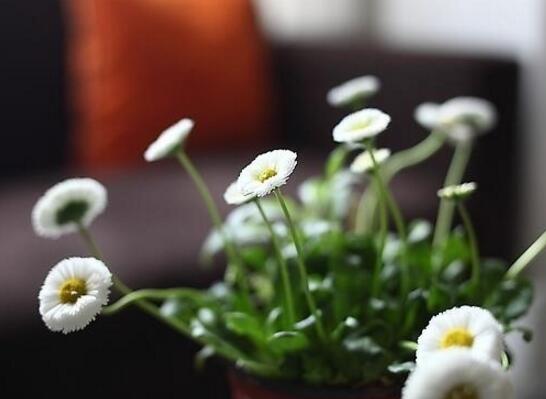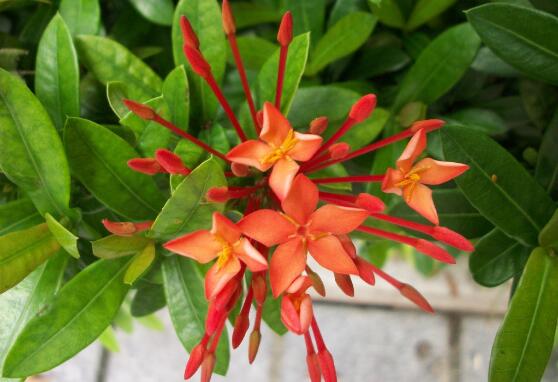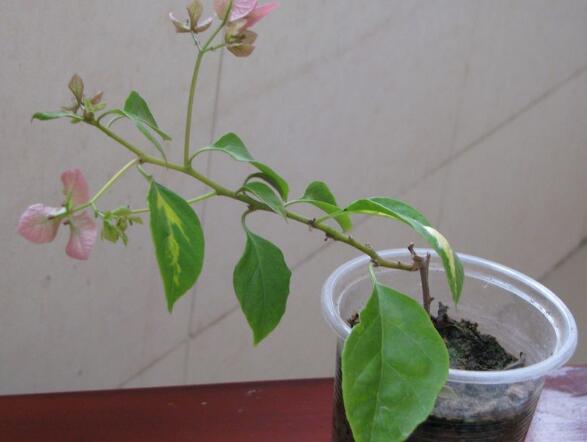How to reproduce daisies, how to reproduce daisies / sowing / cutting / ramet
Daisy, a plant native to Europe, was introduced to China. Nowadays, it is not a common flower in people's life. Although it is quite common, many people may not know much about how to reproduce daisies. The breeding methods of daisies are explained in detail below. Interested friends come and have a look.
How to propagate / sow / cut / split daisies

On how to reproduce daisies, in fact, it can be roughly divided into three methods, namely, sowing reproduction, cutting propagation and ramet reproduction, as long as the method is mastered or relatively easy to reproduce, and the survival rate will be greatly improved. As for the method of breeding daisies, let's move on.
Second, the propagation methods of daisies
Sowing and reproduction
1. Sowing time
Among the breeding methods of daisies, sowing reproduction is a more common one. To carry out this method, the choice of time is very important. Generally, we can choose to sow daisies in spring or autumn, the climate and temperature of these two seasons are more suitable for daisies to grow.
two。 Sowing method
When sowing daisies, first mix the seeds with fine sand, then sprinkle them evenly on the soil, and then cover the 0.5cm soil on the surface after sowing. After these steps, you need to water them. Remember not to pour them directly when watering them, because the daisies are relatively small, so they are easy to wash away. We can choose to use spray cans to water them.
3. Subsequent management
After sowing, we should control the ambient temperature, the most suitable temperature for the growth of daisies is between 18-25 °C, and it is best to cover the basin soil with a protective film, so as to maintain the moisture of the soil, and then wait for about 7-10 days to emerge.
Cuttage propagation
When cutting daisies, we can choose the period from April to June, because the climate is more suitable, and the cutting survival rate is the highest at this time. Before cutting, we need to choose strong cuttings, remove the leaves, and then insert 1/3 of the soil directly, and keep the bed moist after cutting.
Ramet propagation
We can choose to propagate some excellent varieties, usually at the end of March every year. At this time, we have to cut off the lateral buds of its roots and transplant them into the new basin soil, so that it is finished, and the follow-up method is the same as that of sowing.
How to reproduce daisies and how to reproduce daisies
Daisies bloom in early spring, full of vitality, with a gentleman's demeanor and naive elegant demeanor, deeply loved by the Italians, so they were elected as the national flower. So how do daisies reproduce? Next, let's introduce the breeding methods of daisies.
How to reproduce daisies and how to reproduce daisies
Daisies can be divided, cut, grafted, sown and other methods. Grafting and sowing methods require high technical conditions, and the reproduction process is relatively tedious. Without superb cutting, grafting techniques, selection of improved varieties, artificial pollination and other techniques, it is difficult to propagate successfully. These two propagation methods, only when a large number of seedlings are needed, carried out in the nursery, family chrysanthemum, generally use split-plant method and cutting method to propagate.
Seed propagation
Most of the seeds in the south are sown from August to September in autumn, or in spring, but they often grow poorly in summer. In the north, most of the seeds are sown in spring or in autumn, but the flower seedlings need to be transferred to the greenhouse for cultivation and management in winter. Because the seeds of daisies are relatively small, they are usually sown. However, sowing seedlings often can not maintain the characteristics of the mother plant. Before sowing, apply enough rotten organic fertilizer as the base fertilizer, and turn the rake deeply to make a flat bed. Sow the seeds with fine sand, cover the fine soil with a thickness of about 0.5 cm, cover the sunshade net and water thoroughly after sowing.
Keep the temperature around 28 ℃ after sowing and cover with plastic film when it is cold and rainy in early spring to maintain soil moisture and temperature. Watering should be sprayed carefully to prevent soil surface hardening. After about 10 days, the seedlings are unearthed, remove the sunshade net or plastic film, and can be transplanted to the field when the seedlings have 2-3 pieces. Chrysanthemum cauliflower can be sown directly, sowed in February in southern China, and sown in early April in cold areas in the north, with a seed consumption of about 0.2 kg per mu.
Ramet propagation
Because of the great variation of seedlings, the split-plant method can be used to propagate some excellent varieties, but the growth potential is not as good as that of seedlings, and the fruiting is poor. In the middle and late March, the old stubble chrysanthemum cauliflower can be dug out to expose the root neck, and the lateral buds of the existing roots together with the old roots can be cut off and transplanted to the field. Ramet propagation is more suitable for sprouting new shoots.
Cuttage propagation
Cutting propagation can be carried out throughout the growing season, and the survival rate of cutting from April to June is the highest. It is best to mix new soil with rotten organic fertilizer in the seedbed. Cut the branches with 3-5 nodes and 8-10 cm in length, remove the basal leaves, and dig into the soil at the depth of 1 stem 3-1 bank 2 with long cuttings. Keep the work bed moist and avoid waterlogging after cutting. shade is needed in high temperature season, and plastic film arch shed can be built to keep warm and moist when the temperature is low. Generally, it can be transplanted to Daejeon after 15 days.
Propagation methods of daisies 1. Seed propagation
In the south, seeds are usually sown from August to September, while in the north, they are sown in spring. Generally, the seeds are sown evenly, covered with fine soil, then watered thoroughly and kept at a temperature of about 28 ℃. New buds can germinate in about 10 days.
two。 Ramet propagation
Generally, the old stubble chrysanthemum cauliflower can be dug out in the middle and late March to expose the root neck, cut off the lateral buds that already have roots together with the old roots, and transplant them into the new basin. Ramet propagation can also be carried out when sprouting new shoots.
3. Cuttage propagation
Cuttage propagation is generally in April-June, it is best to use new soil to add mature organic fertilizer to make a good seedbed. Cut the branches with 3-5 nodes and 8-10 cm long, remove the basal leaves, and dig into the soil at half the length of the cuttings. Keep the soil moist and ventilated after cutting.
- Prev

How to breed dragon boat flower, dragon boat flower three propagation methods/cutting survival rate is the highest
Dragon boat flower, an ornamental plant, it not only flowers, but also rich in color, very likable, many flower friends potted at home. However, in addition to viewing, there are many effects and functions of Dragon Boat Flower, which is also multiplied by people. How does Dragon Boat Flower reproduce?
- Next

When is the best time for triangulated plum cuttage? the method of triangulated plum cuttage / March cuttage is 4 steps in place.
The beauty of triangular plum does not need to be described too much. People should be impressed by the beauty of triangular plum. Its green leaves and bright colors are really beautiful. In addition to beauty, triangular plum has many effects and functions, so it is multiplied in large numbers. As for the cuttage commonly used in the propagation of triangulated plum, in which month is the cuttage best?
Related
- Fuxing push coffee new agricultural production and marketing class: lack of small-scale processing plants
- Jujube rice field leisure farm deep ploughing Yilan for five years to create a space for organic food and play
- Nongyu Farm-A trial of organic papaya for brave women with advanced technology
- Four points for attention in the prevention and control of diseases and insect pests of edible fungi
- How to add nutrient solution to Edible Fungi
- Is there any good way to control edible fungus mites?
- Open Inoculation Technology of Edible Fungi
- Is there any clever way to use fertilizer for edible fungus in winter?
- What agents are used to kill the pathogens of edible fungi in the mushroom shed?
- Rapid drying of Edible Fungi

